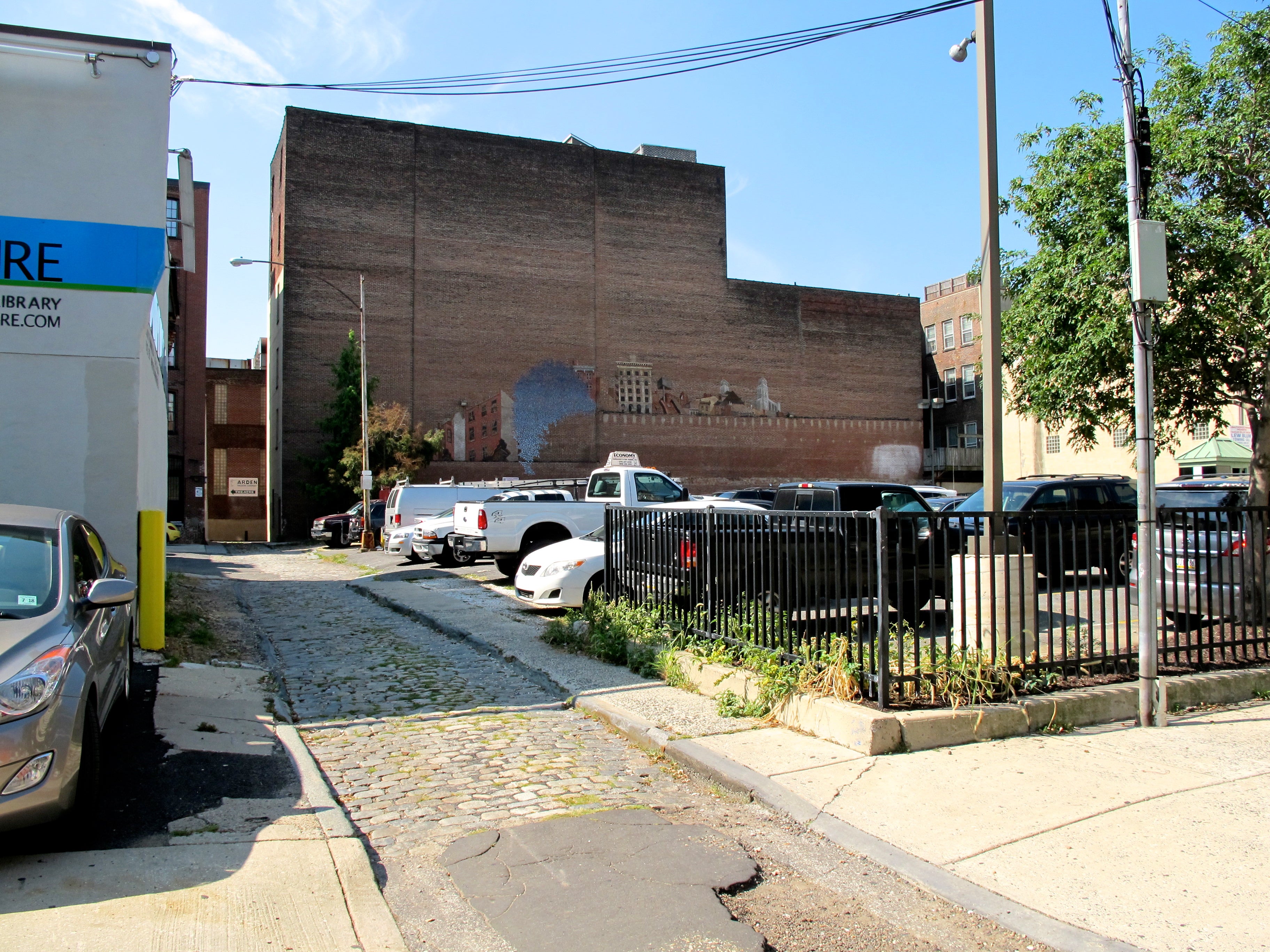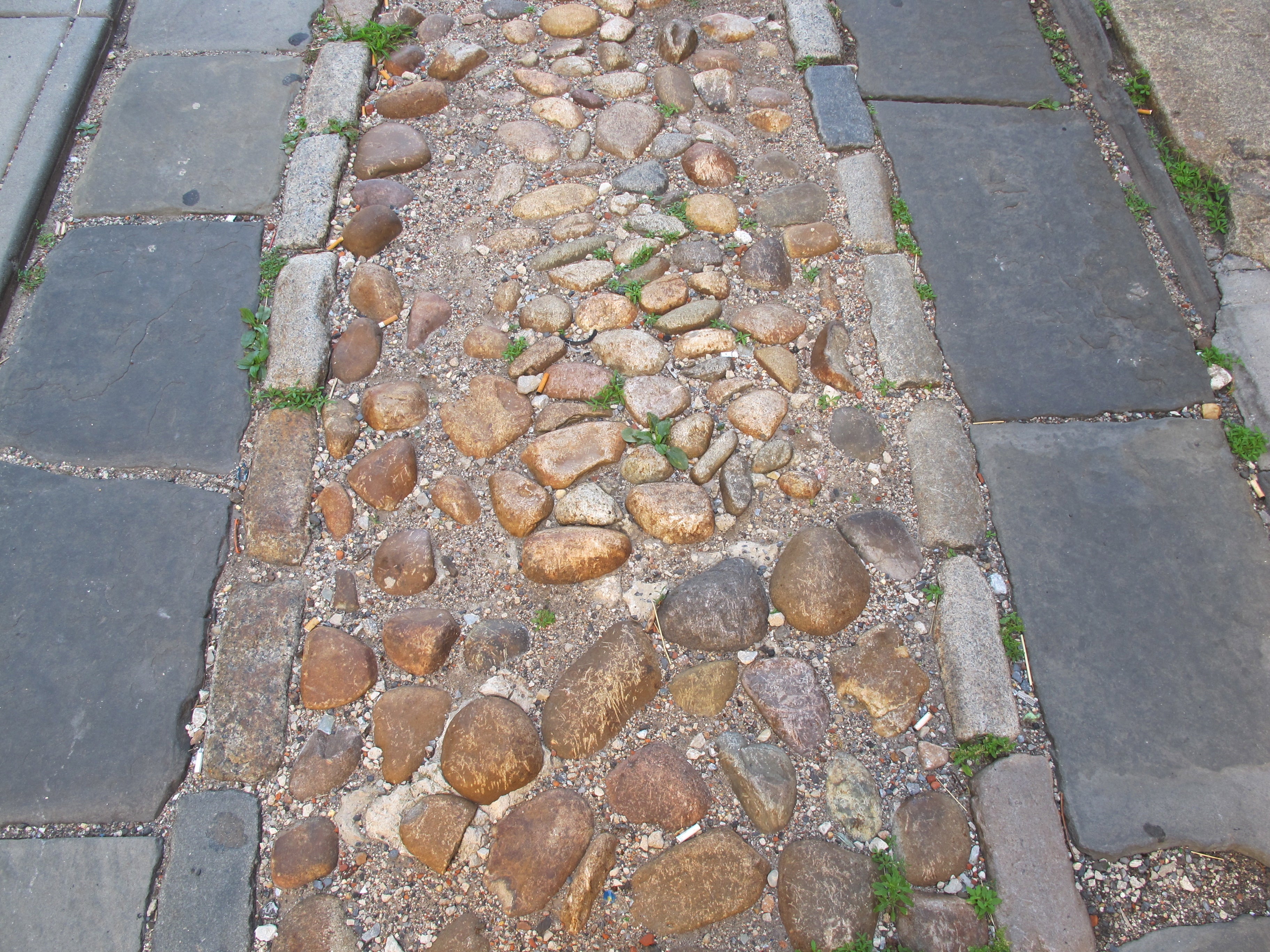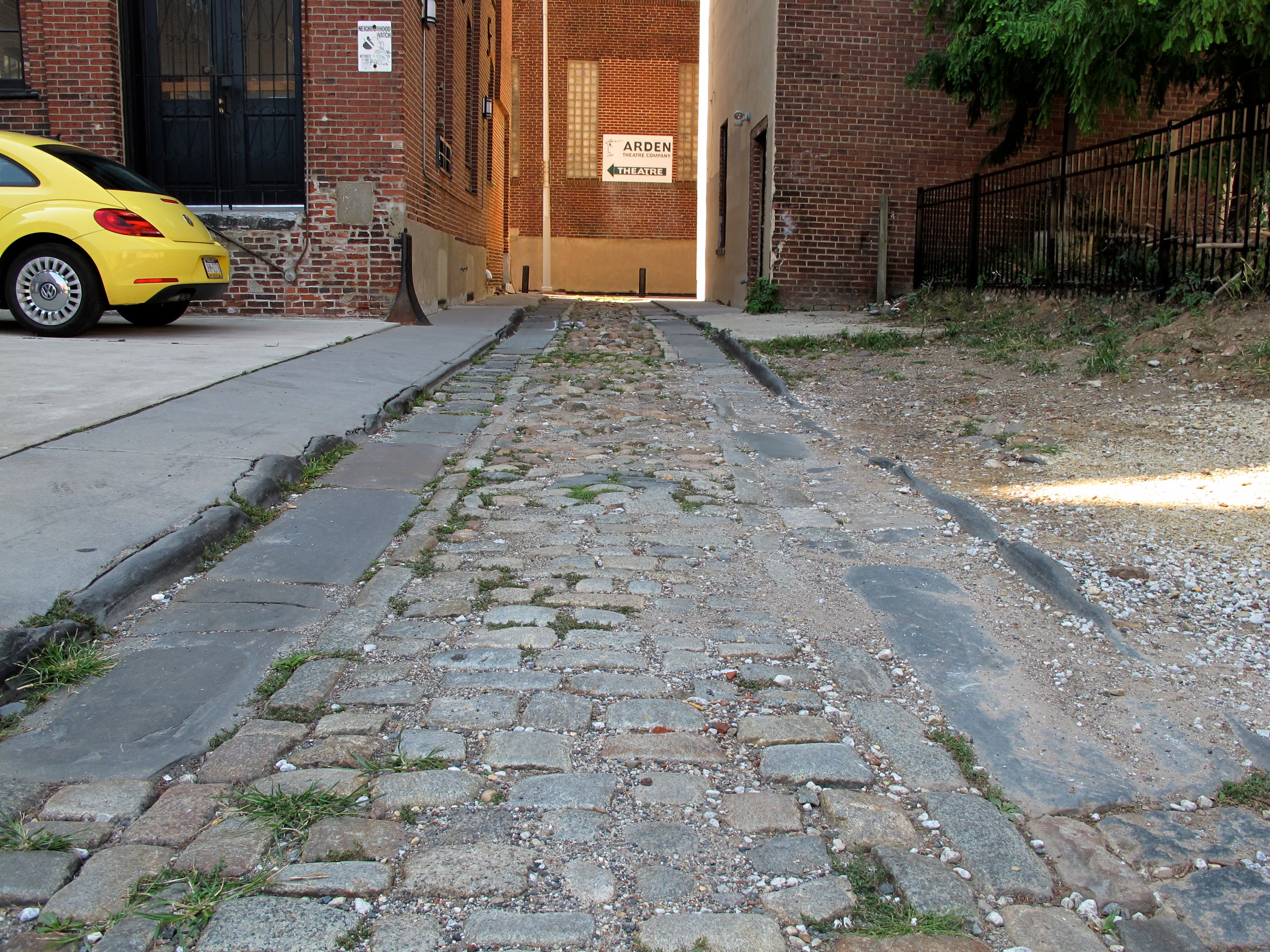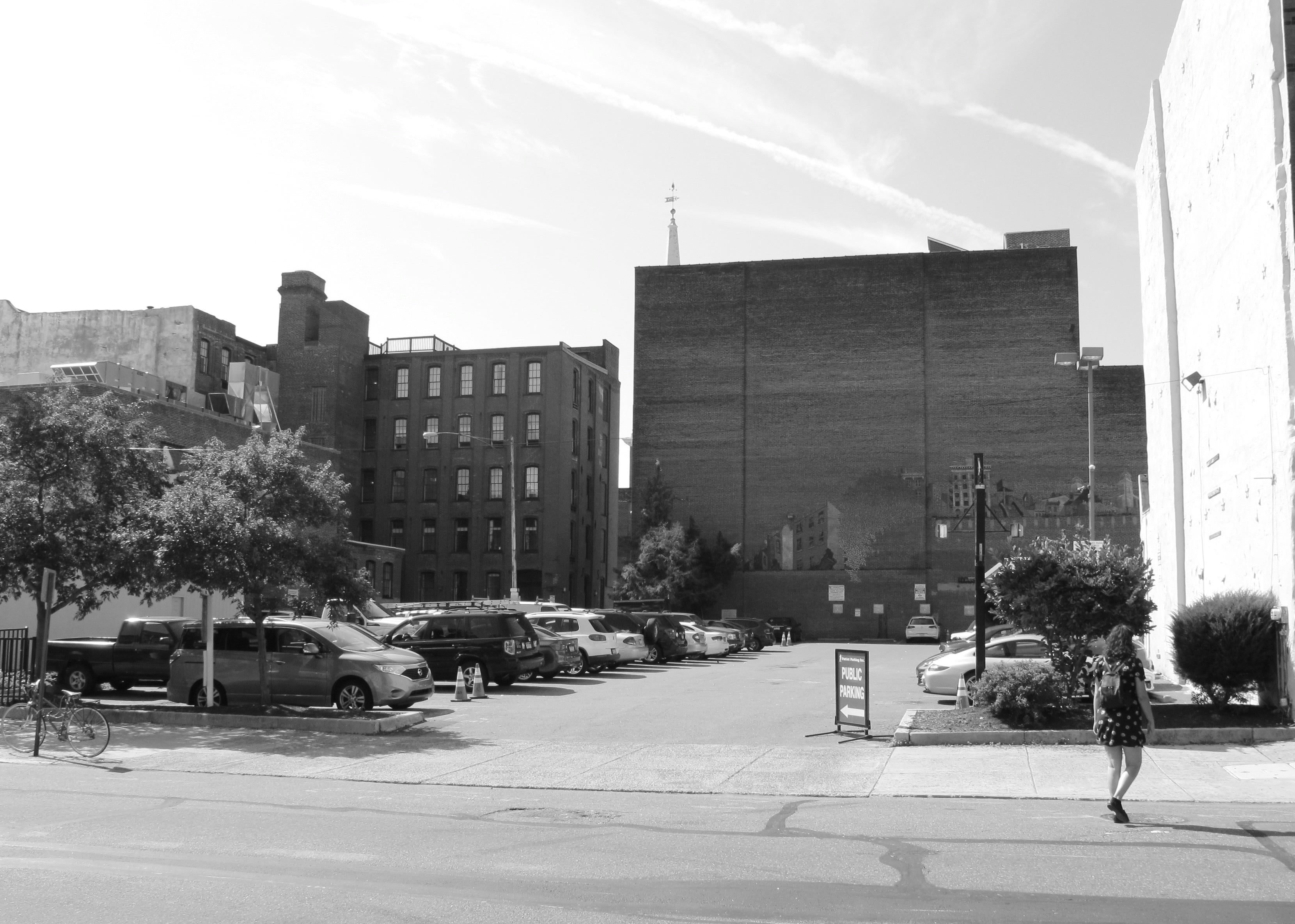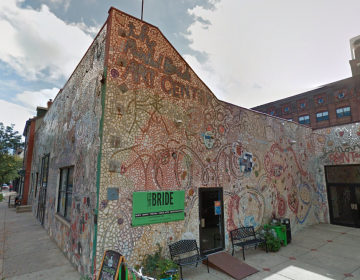Historical Commission to consider revived plans for development at 2nd and Arch

Another stalled development project in Old City is being revived, this time at 218 Arch Street.
The site borders on historic Little Boy’s Court, which might be the oldest cobblestone street in Philadelphia, according to the Historical Commission staff. The Inquirer reported that the staff had previously said the proposal, a 10-story apartment complex with retail spaces on the ground floor, was out of scale with the neighborhood. On Tuesday, the Commission’s architecture committee voted to recommend that the project be approved with some specific recommendations regarding the design of the cornice line and the terraces.
But the full Commission still needs to decide how to use that recommendation. The site of the proposed development is currently used a surface parking lot. For undeveloped properties in historic districts, the Historical Commission has a chance to review and comment on development proposals, but developers are free to ignore those comments, explained Jon Farnham, the Commission’s director.
But because Little Boy’s Court is a designated historic street that overlaps onto the site, there’s some question as to whether that disqualifies 218 Arch as an “undeveloped” site, and thereby gives the Commission jurisdiction to review and vote on the whole proposal. Richard Thom, an Old City resident and former member of the now-defunct Old City Civic Association, told the architecture committee on Tuesday that he believed the Commission does have that jurisdiction and should exercise its review authority.
Farnham said the Commission would decide at a future meeting on the issue of jurisdiction, and then take up the project itself after that determination is made. In his opinion, the claim that the Little Boy’s Court gives the Commission jurisdiction over 218 Arch is “fairly tenuous.” The issue was approached by the Commission before, when it was weighing in on a separate proposal for a 23-story building on the site nearly a decade ago. (That proposal was developed by Michael Yaron, who was later sentenced to federal prison for his part in a scheme to get asbestos-removal contracts at a New York hospital.)
From the minutes of that meeting, in November 2006: “… the Commission has never encountered a situation in which a designated historic street runs across a private parcel on which the only other improvement is a surface parking lot. The application raises a fundamental question: Is a parcel that includes a designated, significant historic street ‘developed’ or ‘undeveloped’ in the eyes of the preservation ordinance? The staff contends that the parcel is ‘developed’ owing to the designated significant street paving, which is located on, not merely adjacent to, the parcel.”
The Commission never answered that question, because the proposal was withdrawn before it got that far.
It was withdrawn for separate reasons. For one thing, the Commission had recommended that it be denied because it was out of scale with the rest of the neighborhood. And Old City Civic Association was opposed to the height of the building, and later appealed the zoning board’s approval of variances for the project.
Those appeals later ended in a settlement agreement and a developer’s agreement, strictly limiting the height and massing of any new development on the site, which is still in place. That agreement says that the development can’t rise any higher than 108½ feet, that its floor area ratio (FAR) can’t exceed 6.45, and that the developer must restore Little Boys Court.
The current proposal, which was designed around the settlement agreement, includes 116 apartments. Around two thirds will be one-bedroom units and one third will be two-bedroom units, said Stephen Varenhorst, the project’s architect. It will include 61 underground parking spaces, an internal loading area, and retail space wrapping around the corner of Arch Street and Little Boy’s Court.
Joe Schiavo, a former member of OCCA, said he thinks the current proposal is faithful to both the spirit and the letter of the developer’s agreement. He still thinks it’s too tall for Old City, but says it’s better than 23 stories.
Wondering why it’s called Little Boy’s Court?
“We had nothing useful in our files on Little Boy’s Way, but I stumbled on the answer looking at maps, city directories, and deeds,” said Jon Farnham, in an email. “About 1820, Maulby J. Littleboy purchased properties on N. 2nd Street for a comb factory and store. It appears that he owned rental houses behind the factory on Littleboy’s Court. So it is Littleboy’s, not Little Boy’s.”
WHYY is your source for fact-based, in-depth journalism and information. As a nonprofit organization, we rely on financial support from readers like you. Please give today.



